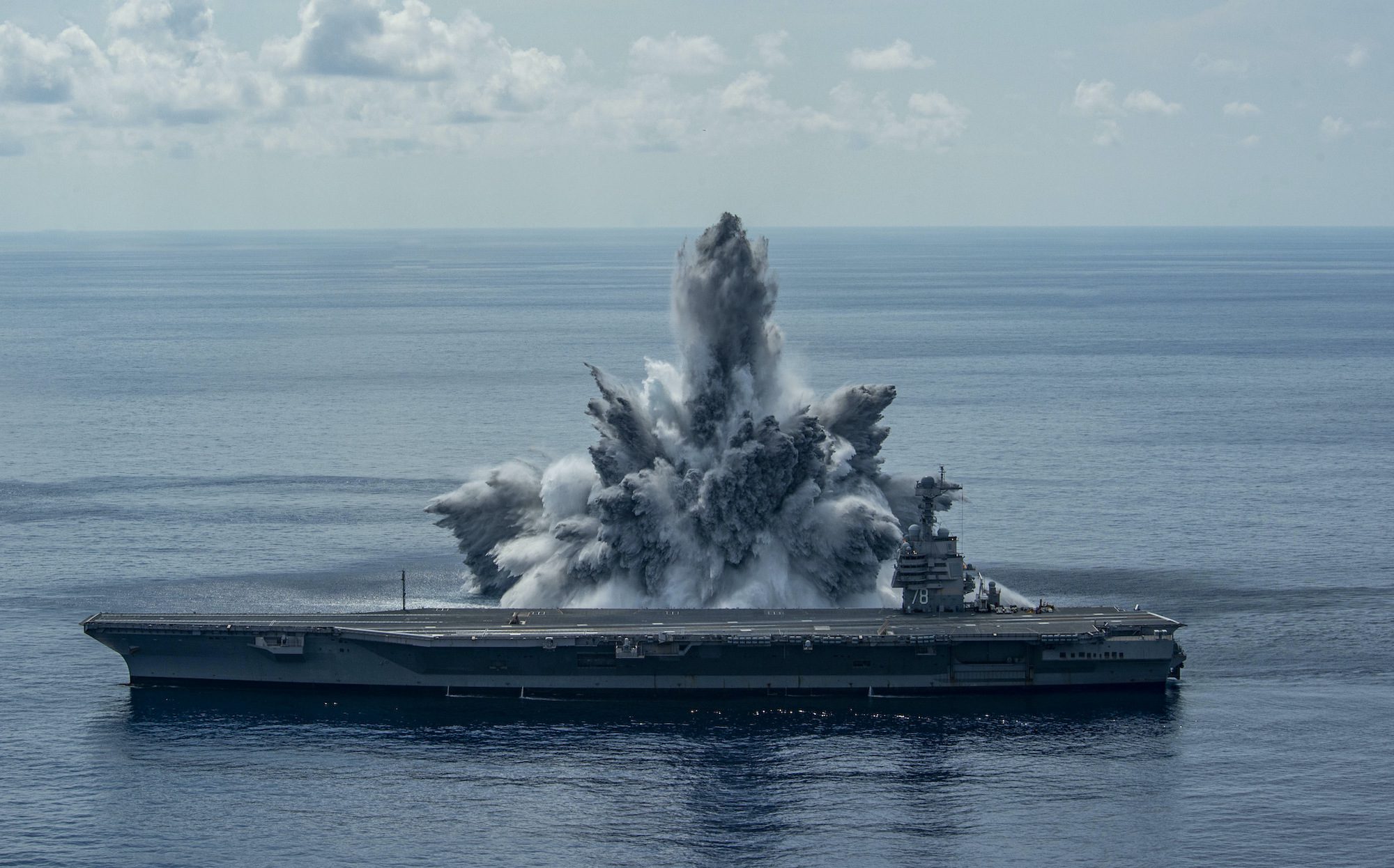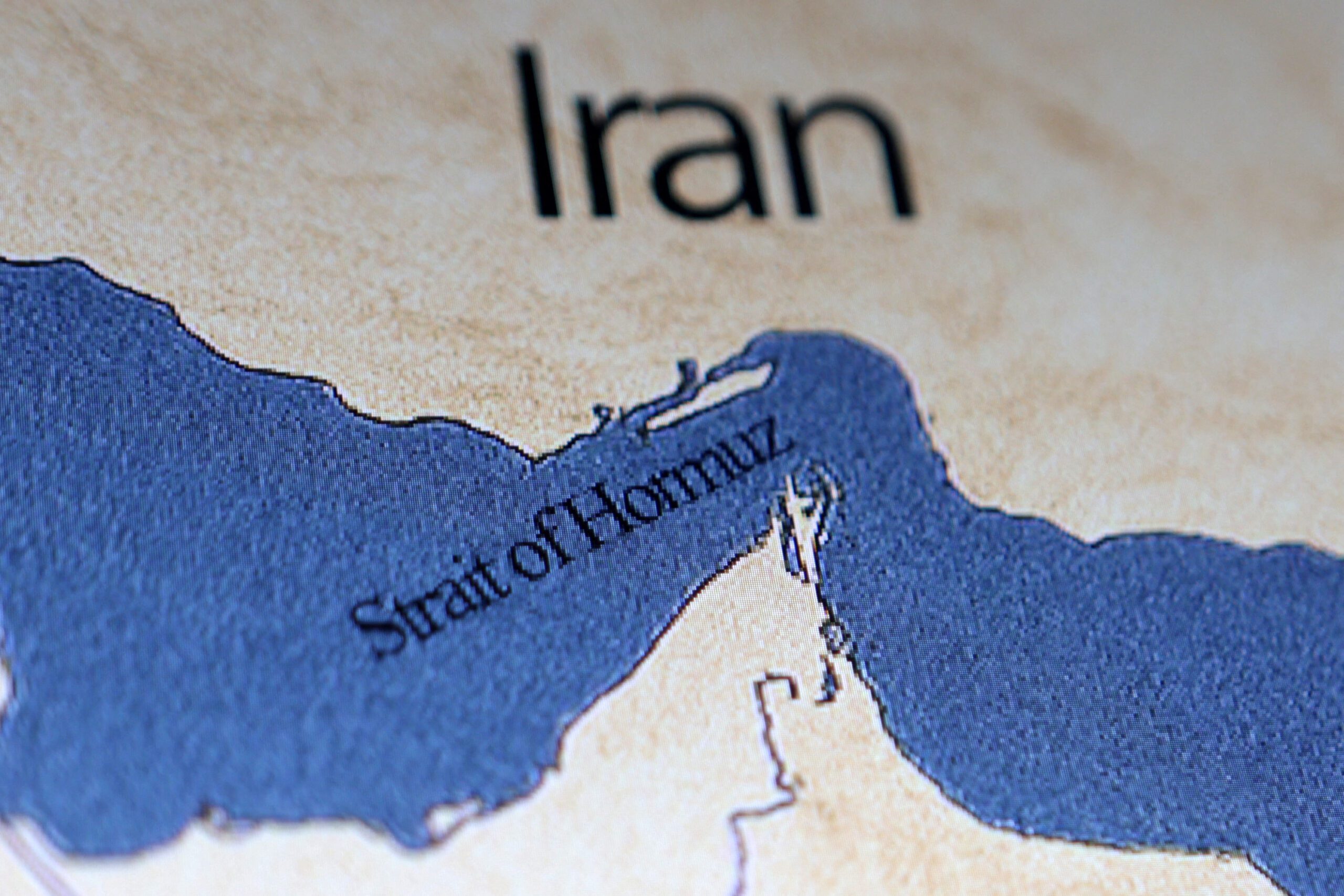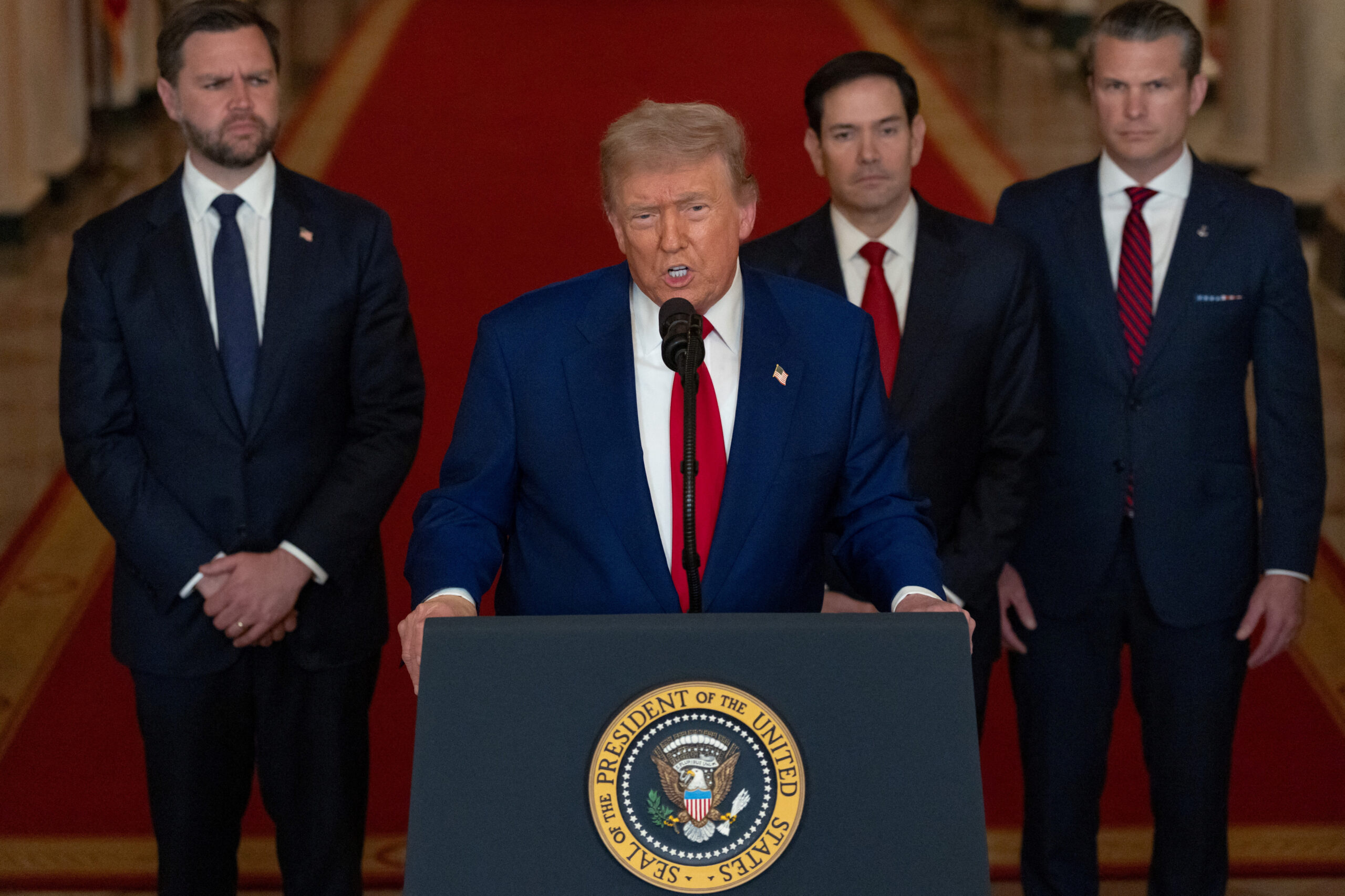The USS Gerald R. Ford (CVN 78) completed its third and final round of blasts as part of its Full Ship Shock Trials off the coast of Jacksonville, Florida, on Sunday.
Shock trials are meant to validate a ship’s hardness and ability to sustain operations in a simulated combat environment using live ordnance. Over the course of four months, the first-in-class aircraft carrier withstood the impact of three 40,000-pound underwater blasts, released at distances progressively closer to the ship.
“The Navy designed the Ford-class carrier using advanced computer modeling methods, testing, and analysis to ensure the ships are hardened to withstand harsh battle conditions,” said Capt. Brian Metcalf, manager for the Navy’s future aircraft carrier program office, PMS 378.
Metcalf said that the goal of the tests is to ensure that Ford’s integrated combat systems perform as designed and added “the tests demonstrated—and proved to the crew, fairly dramatically—that the ship will be able to withstand formidable shocks and continue to operate under extreme conditions.”
The first two shots in Ford’s Full Ship Shock Trials (FSST) took place on June 18 and July 16.
The U.S. Navy has conducted FSSTs over several decades, most recently for the Littoral Combat Ships USS Jackson (LCS 6) and USS Milwaukee (LCS 5) in 2016; as well as on the San Antonio-class amphibious transport dock USS Mesa Verde (LPD 19) in 2008, the amphibious assault ship USS Wasp (LHD 1) in 1990, and the guided missile cruiser USS Mobile Bay (CG 53) in 1987.
USS Gerald R. Ford is the newest and most advanced aircraft carrier in the U.S. Navy and represents the first major design investment in aircraft carriers since the 1960s.
The last aircraft carrier to execute FSST was USS Theodore Roosevelt (CVN 71) in 1987.
FSSTs are held on a precise schedule in compliance environmental mitigation requirements and respectful of known migration patterns of marine life and protected species. Prior to each shot, the FSST team notified mariners to avoid the test area, and implemented extensive protocols to ensure the safety of military and civilian personnel participating in the operation. A team of more than a dozen scientists, biologists, and observers were assigned to Ford, nearby support vessels, and observation aircraft to help detect if marine life is in the area.
“Safety was always the driving consideration throughout the shock trials,” said Ford’s Commanding Officer, Capt. Paul Lanzilotta, who made the go/no-go decision based on a number of factors. “So, once we were ready and in position, pausing the countdown to the shot could really test our focus and persistence.”
“So many pieces had to fall into place to execute Ford’s FSSTs within the testing window,” added Capt. Lanzilotta. “Success required equal measures of technical expertise, trust, and courage—traits you’ll find in great supply on Warship 78 and throughout the entire Ford Shock Trial Team. These shots have only strengthened my confidence in the durability of this ship, and the excellence of the crew who came out here to own it, and absolutely crushed it.”
Sign up for our newsletter

 Join The Club
Join The Club











